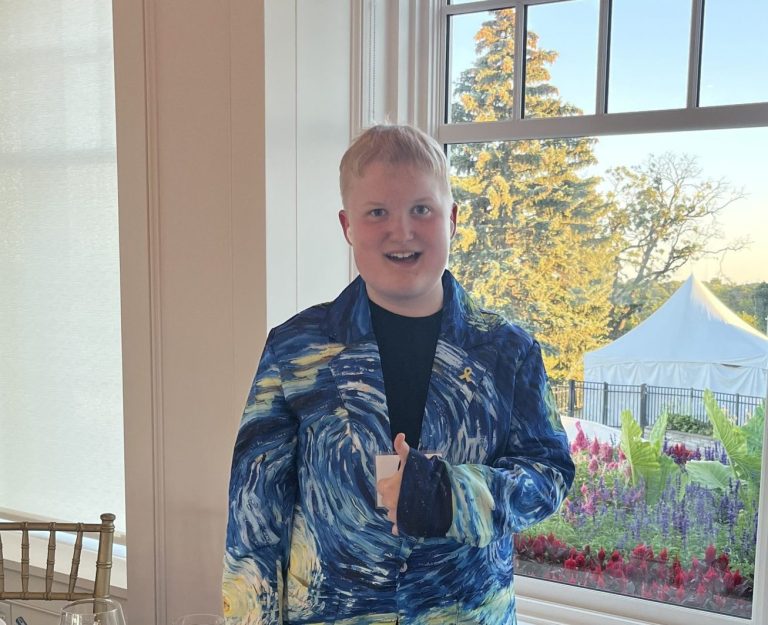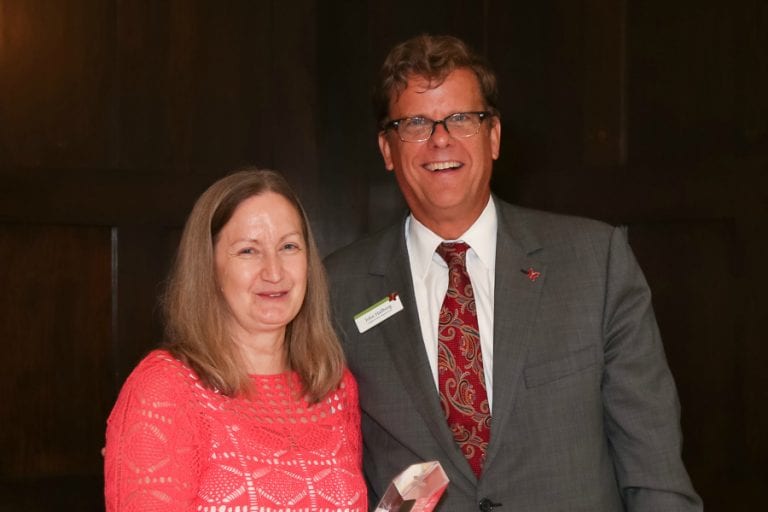It’s a common karate saying: “A black belt is a white belt who never quit.” That describes 10-year-old Tenzin to a T. A Junior Black Belt and leukemia survivor, he knows a thing or two about what it means to persevere.
Tenzin was just a few months from finishing second grade when the strange symptoms started to appear. First, bloody noses. Probably allergies, his doctor said, and prescribed him a nasal spray. Then, several days of vomiting. An ear infection. Unexplained bruising on his torso. His mom, Colleen, decided enough was enough and took Tenzin to the emergency room. Within days, active, spunky Tenzin was receiving his first dose of chemotherapy - he’d been diagnosed with acute lymphoblastic leukemia, and doctors said there was no time to waste. He started chemotherapy within days.
A photo from this time shows Tenzin under a space-themed blanket in his hospital bed, exhausted from being in pain. “This is a hard picture for me,” Colleen said. “He had three IVs in at this time and was finally sleeping after a rough night. I also find this picture tough as he still had his beautiful curly hair.”
“Tenzin’s Junk and Stuff”
During Tenzin’s initial treatment, Tenzin and Colleen quickly learned how isolating cancer can be. It became hard for Tenzin to attend school or karate lessons in person, both because his treatment made him extra-vulnerable to illness and because sheer exhaustion made both nearly impossible. When he was in the hospital, he rarely wanted to leave his room for long. In an attempt to draw people into Tenzin’s room and get him socializing, Colleen brought some Cosmic Brownies to hand out - and it worked. The brownies gave Tenzin an idea - start a “store” in his room, selling his creations, knicknacks, treats and snacks to doctors, nurses and anyone who came by. Soon, Tenzin had a steady stream of visitors coming by to check out his eclectic inventory.
“It allowed Tenzin to socialize with people from all ends of the hospital,” Colleen said. “It gave him a goal and purpose to focus on every day rather than just illness. He looked forward to setting up everyday and seeing who would come to visit. His best ‘return customers’ were those who learned about him and would come chat about Minecraft or The Flash. ”
During one of Tenzin’s hospital stays, he met James Orrigo, artist, musician and creator of Children’s Cancer Research Fund’s Big Dreams Tour, a program that helps kids bring their imaginations to life through music, video, graphics and more. James and Tenzin co-created a music video about Tenzin’s store, which they called “Tenzin’s Junk and Stuff.” Then, with the help of Sachem North High School students from Long Island, NY, James brought Tenzin’s music video to life - the high school band and choir learned and played Tenzin’s song, the props, art and robotics students made sculptures modeled after his music video, and the whole school collaborated to give Tenzin a completely personalized, immersive experience that was all about him - his imagination come to life. See the behind-the-scenes experience of creating Tenzin’s special day.
“It was amazing to watch the whole school come together and use so much of their time and creativity to make one kid feel special,” James said. “Tenzin was a natural celebrity, he was living it up. It was an unforgettable day.”
Better Understanding the Cancer Experience
Colleen says she didn’t give much thought to childhood cancer before Tenzin was diagnosed, but now she finds herself wishing more people understood what the experience was like.
“I wish people understood how long treatment can be.” Tenzin’s treatment started in late 2022. He’ll still be receiving treatment until October 2024 - and that’s if everything goes to plan. Then, he’ll likely receive scans a few times a year for several more years. This multi-year timeline is typical for kids with leukemia.
“I wish they knew what ‘remission’ meant.” For kids with leukemia, “remission” is usually the goal of the induction phase of chemotherapy - it means that doctors can’t detect leukemia cells in the child’s blood under a microscope. It does NOT mean the child’s cancer is cured - in fact, there are usually many months or even years of treatment ahead, even if a child achieves remission in the first few weeks of chemotherapy.
“I wish people knew that cancer is more prevalent than you might think, and the side-effects from treatment are long-term.” Around 3,800 children are diagnosed with leukemia every year. It’s the most common form of childhood cancer, and though we’ve come a long way when it comes to treating leukemia in kids, the side-effects are still more than any child should have to bear. Kids can lose their hearing, develop heart, lung, liver, bone and muscle problems, experience cognitive and learning difficulties, and experience fertility issues later in life.
Colleen is grateful that amidst the lows of cancer, she’s also seen Tenzin experience some highs. He’s gained confidence in himself, even speaking up to set boundaries with medical staff - no easy feat for a 10-year-old. In the past year, Tenzin has adopted a pet tortoise, persevered through countless medical and social challenges, and even started karate training again - in private lessons this time.
“We are doing this to limit his exposure to germs and allow him some normalcy again,” Colleen said. “Tenzin has been training for six years and is a Junior Black Belt. From his smile, you can see the love he has for it."
Join the fight with a Sustaining Gift
One of the biggest needs for childhood cancer research is consistent funding to drive breakthroughs and bring better treatments to kids faster. By committing to a monthly gift, you can provide that sustainable funding because kids don’t have time to wait. No gift is too big or too small to make a lasting impact in the life of a child fighting cancer.




